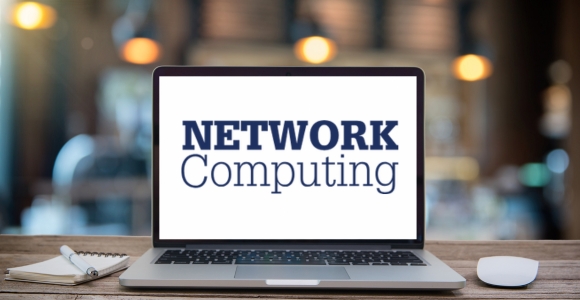Modernizing Network Security: Preparing for the Inevitable was published in Network Computing by Mike O’Nan, Director, Networking Architecture, Verinext. Read the original article here.
Today, the threat of cyberattacks is ever-present and growing more sophisticated. As technology advances, so do the tactics and techniques of cybercriminals, making it imperative for organizations to stay ahead in their networking and security modernization efforts. According to a recent Statista report, the global cost of cybercrime is projected to reach a staggering $15.63 trillion by 2029, underscoring the need for robust cybersecurity measures. One of the most crucial steps organizations can take to protect themselves is to be prepared, especially through effective incident response (IR) strategies.
The National Institute of Standards and Technology (NIST) outlines the incident response life cycle in four key stages, with the first and arguably most important being preparation. This article delves into the value of modernizing network security, highlighting proactive measures organizations can implement to enhance their incident response readiness and overall cybersecurity posture.
1. Conduct an Incident Response Readiness Assessment
Feeling prepared for a cyber incident can be misleading without proper testing. An IR readiness assessment conducted by an external third party provides a critical perspective on an organization’s current state of preparedness. Unlike audits, these assessments identify potential weaknesses in processes, personnel, technology, and documentation that could undermine effective incident response. By proactively addressing these gaps, organizations can strengthen their defenses against cyberthreats and enhance their overall readiness.
2. Develop a Robust Incident Response Plan
A comprehensive IR plan serves as a roadmap for managing cyber incidents, detailing response strategies before, during, and after incidents. It outlines the structure of the IR team, including roles and responsibilities, and covers all stages of incident response: preparation, detection and analysis, containment, eradication and recovery, and post-incident activity. Regular updates to the IR plan ensure it remains effective and relevant, providing a clear, actionable guide during crises.
3. Provide Guidance via Incident Response Playbooks
Incident response playbooks extend the IR plan by offering standardized procedures tailored to specific types of incidents, such as ransomware, denial-of-service attacks, or insider threats. These playbooks provide step-by-step action items for each phase of incident response, ensuring that the organization’s response is swift, effective, and consistent. Playbooks are essential tools for guiding teams through complex scenarios, reducing the likelihood of costly mistakes during an actual incident.
4. Test Your Incident Response Plan Using Tabletop Exercises
Tabletop exercises simulate cyber incidents to test the effectiveness of an organization’s IR plan and playbooks. These discussion-based exercises allow team members to role-play their responses to a fictional incident, providing valuable insights into potential weaknesses and areas for improvement. Conducting tabletop exercises at least annually, or more frequently, helps ensure that teams remain prepared and capable of responding to real-world cybersecurity incidents.
5. Develop System Inventories and Network Diagrams
A thorough understanding of the organization’s IT environment is crucial for effective incident response. System inventories and network diagrams provide critical information about business owners, system functionality, data classification, and network segmentation. This knowledge enables incident responders to quickly assess the impact of a cyber incident and make informed decisions to contain and eradicate threats, ultimately reducing business impact.
6. Implement a Patch Management Process
Timely patching of vulnerabilities is a fundamental aspect of network security. Threat actors often exploit known vulnerabilities in public-facing applications, making patch management a critical defense mechanism. A well-maintained patch management process helps narrow the organization’s threat landscape and removes easy entry points for cybercriminals.
7. Conduct Regular Vulnerability Assessments and Penetration Tests
Vulnerability assessments and penetration tests are essential for identifying and mitigating security weaknesses within an organization’s network. Regular vulnerability assessments help ensure the effectiveness of patch management processes, while penetration tests uncover unknown vulnerabilities that could be exploited by threat actors. Conducting these assessments frequently helps maintain a strong security posture in an ever-changing threat environment.
8. Review the Active Directory Environment
Active Directory (AD) plays a critical role in Identity and Access Management (IAM), but it is often neglected in terms of security oversight. Regular reviews of the AD environment ensure alignment with industry best practices and help identify and remediate security gaps. Enhancing AD logging capabilities is also essential for effective incident detection and investigation.
9. Enable Central Logging and Ensure Monitoring
Centralized logging and vigilant monitoring are vital components of an effective cybersecurity strategy. By aggregating logs from various sources and monitoring them for anomalies, organizations can proactively detect and respond to potential threats. Central logging forms the foundation of a robust detection program, while monitoring ensures that critical alerts are not overlooked.
10. Don’t Forget the End-Users
End-users are often the weakest link in an organization’s cybersecurity defenses. Implementing User and Entity Behavior Analytics (UEBA) can help identify abnormal user behavior that may indicate compromised accounts or insider threats. Even without advanced tools, robust logging practices can create behavioral baselines that enable the detection of deviations from normal activities.
Apply Vigilance to Stay Ahead of Emerging Threats
While this list of proactive measures is not exhaustive, it covers some of the most common weaknesses found in organizations. By prioritizing these activities—starting with a readiness assessment and developing a robust IR plan—organizations can significantly enhance their cybersecurity resilience. Modernizing Network Security is an ongoing processes that require continuous vigilance and adaptation to stay ahead of emerging threats.
Partnering with a trusted solution provider is invaluable in navigating this complex landscape. Experienced providers bring deep expertise, cutting-edge tools, and proven strategies to the table, ensuring that your organization is not only prepared for today’s threats but also for those on the horizon. They can offer tailored guidance, support, and services that align with your specific business needs, helping you implement best practices and avoid common pitfalls. By leveraging their insights and resources, you can more effectively modernize your network, fortify your defenses, and ultimately secure your organization’s success in an increasingly digital world.
Related Posts:
Protecting Against Advanced Persistent Threats (APTs) in Enterprise Networks
Strengthening Your Network: Ensuring Resilience with Managed Secure Networking






